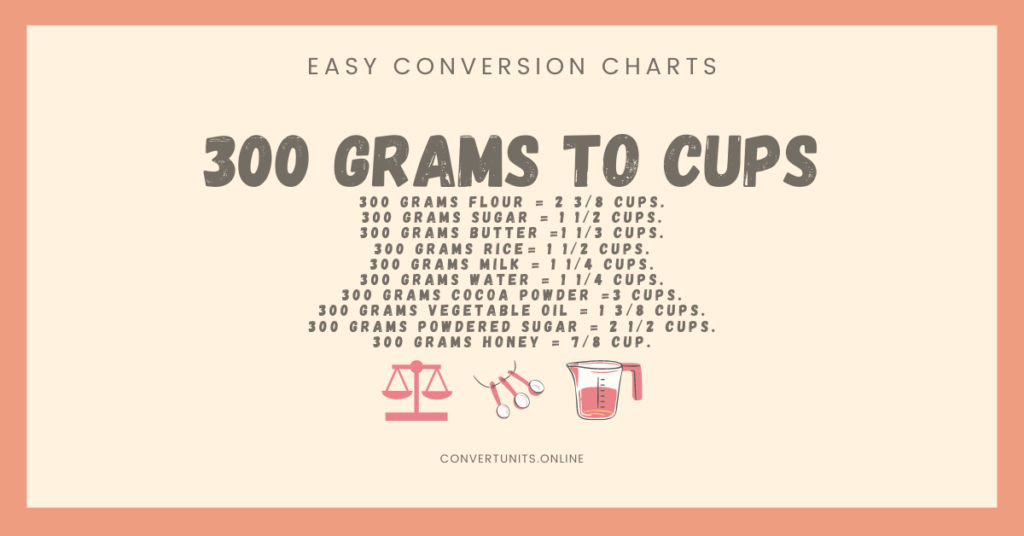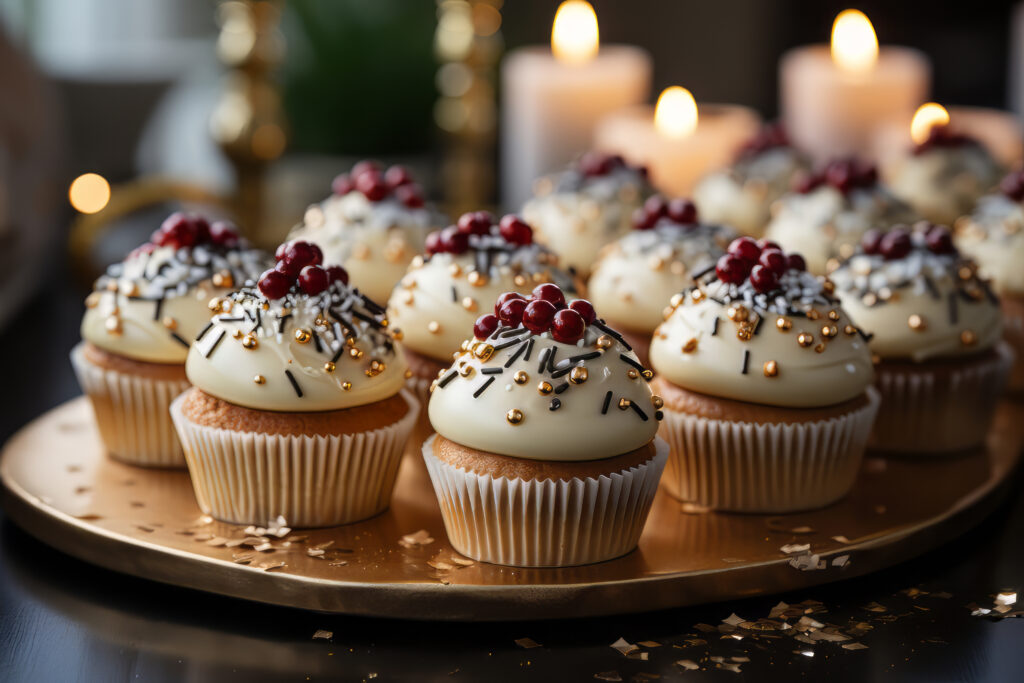Cooking and baking are about creativity, flavor, and — most importantly — accuracy. When following international recipes, you’ll often come across measurements in grams rather than cups. This can be confusing, especially if your kitchen tools only include measuring cups. One of the most common questions is: how to convert 300 grams to cups?
The answer isn’t universal because grams measure weight, while cups measure volume. Each ingredient has a different density, meaning 300 grams of flour won’t fill the same amount of space as 300 grams of sugar or butter.
This detailed guide explains how to accurately convert 300 grams to cups for various ingredients — flour, sugar, butter, liquids, and more — so that your recipes turn out perfectly every time.
Understanding the Difference Between Grams and Cups
Before converting 300 grams to cups, it’s important to know what these measurements actually mean.
Grams (g) are a metric unit of weight, used widely in professional kitchens around the world. Cups, however, are a volume measurement, most commonly used in the United States.
Because grams measure how heavy something is and cups measure how much space it takes up, the conversion varies for every ingredient. For example, sugar is dense, so 300 grams will fit into fewer cups than 300 grams of flour.
That’s why understanding this difference is the first step to accurate cooking.
The General Rule for Converting 300 Grams to Cups
There’s no single conversion that fits all ingredients. However, a general guideline is:
1 cup = approximately 200 to 250 grams.
This means 300 grams = about 1.2 to 1.5 cups, depending on what you are measuring.
Still, to get precise results, let’s explore the conversions for specific ingredients.
300 Grams to Cups: Flour
Flour is one of the most commonly used ingredients in baking. It’s light, soft, and easily compressed.
For all-purpose flour, 300 grams equals about 2⅓ cups.
However, how you measure flour affects the result. Scooping flour directly from the bag can compact it, leading to too much flour in your recipe. The best method is to spoon the flour lightly into the measuring cup and level it with a flat edge.
Proper measurement ensures that cakes are soft, bread rises well, and cookies stay light and chewy.
300 Grams to Cups: Sugar
Sugar is much denser than flour, so the same 300 grams will take up less space.
For granulated sugar, 300 grams = 1½ cups.
If you’re using brown sugar, the result can change slightly depending on whether it’s packed or loose. Packed brown sugar equals about 1⅔ cups, while loosely filled brown sugar will be closer to 1½ cups.
Sugar affects texture, color, and sweetness, so measuring it correctly keeps your desserts consistent.
300 Grams to Cups: Butter
Butter conversions are more consistent than dry ingredients because butter has a uniform density.
In general, 1 cup of butter = 227 grams. Therefore, 300 grams = about 1⅓ cups of butter.
If your recipe calls for melted butter, use a liquid measuring cup to get a more accurate measurement. Butter adds richness and texture, so small errors can change the final outcome.
Remember: use the form of butter (solid, softened, or melted) mentioned in your recipe for best results.
300 Grams to Cups: Water
Water is one of the easiest ingredients to convert because it has a constant density.
When converting 300 grams of water to cups, you get 1.27 cups — just over one and a quarter cups.
This same rule applies to most thin liquids like broth or milk. Having the right amount of liquid in a recipe ensures proper texture and consistency, especially in soups, sauces, and batters.
300 Grams to Cups: Oil
Oil is slightly less dense than water, so the conversion is a little different.
300 grams of oil = about 1.36 cups.
This applies to most common cooking oils, including vegetable, canola, olive, and sunflower oil.
When measuring oil, always use a clear liquid measuring cup and read it at eye level. Accurate measurement helps maintain the perfect texture in cakes, dressings, and fried dishes.
300 Grams to Cups: Honey
Honey is heavier and thicker than most liquids, so it fills less volume.
300 grams of honey = approximately 0.9 cups (a little less than one full cup).
Honey’s density means it packs a lot of sweetness into a small space. To make it easier to measure, lightly coat your cup with oil or warm water — this prevents honey from sticking and ensures an accurate quantity.
Why Conversions Differ by Ingredient
You might be wondering why the conversion for 300 grams to cups changes so much from one ingredient to another.
The reason lies in density — how tightly a substance’s molecules are packed together. Ingredients like sugar or honey are denser, so they take up less space. Lighter ingredients like flour and cocoa powder are less dense and occupy more space per gram.
That’s why you can’t use a single conversion for all ingredients — you’ll always need to consider density.
How to Measure 300 Grams Without a Scale
Not everyone has a kitchen scale, but that doesn’t mean you can’t measure accurately.
For dry ingredients, use a dry measuring cup and fill it gently. Avoid tapping or shaking the cup, as it can compact the ingredient and change the measurement.
For liquids, use a transparent cup with volume markings. Pour slowly, and check the level at eye height.
If you frequently convert grams to cups, keeping a small conversion chart handy can save time and prevent errors.
300 Grams to Cups in Everyday Recipes
To make this more practical, here’s how the conversion works in real recipes:
- For cakes: 300 grams of sugar = 1½ cups, perfect for medium-sized cakes.
- For pancakes: 300 grams of flour = 2⅓ cups, ideal for a smooth batter.
- For cookies: 300 grams of butter = 1⅓ cups, giving soft and chewy results.
- For sauces: 300 grams of water or milk = 1¼ cups, maintaining balance in consistency.
Knowing these equivalents helps you follow any recipe from any country, even if it uses different units.
Common Mistakes When Converting 300 Grams to Cups
One major mistake is assuming that 1 cup always equals the same number of grams. This can lead to recipe failures.
For example, 1 cup of sugar and 1 cup of flour don’t weigh the same. Another common mistake is packing ingredients too tightly into the cup, especially flour or brown sugar, which leads to extra weight and incorrect results.
Lastly, ignoring ingredient temperature can also cause small variations — melted butter weighs differently than solid butter.
Precision matters more than most realize!
Quick Conversion Chart for 300 Grams to Cups
| Ingredient | 300 Grams Equals (Approx.) |
|---|---|
| Flour | 2⅓ cups |
| Sugar (white) | 1½ cups |
| Brown Sugar | 1⅔ cups |
| Butter | 1⅓ cups |
| Water | 1¼ cups |
| Oil | 1.36 cups |
| Honey | 0.9 cups |
Use this chart whenever you need to convert quickly without a calculator.
Why You Should Learn These Conversions
Learning how to convert 300 grams to cups isn’t just about following recipes — it’s about confidence in the kitchen.
You’ll be able to adapt any recipe, whether it’s from an American blog, a British cookbook, or a European bakery site. It saves time, reduces waste, and improves consistency.
Understanding measurements also helps you balance flavors better, creating dishes that look and taste professional every time.
Tips for Consistent Results
- Use the right measuring cup for each type of ingredient.
- Level off dry ingredients with a flat edge.
- Avoid shaking the cup or pressing down ingredients.
- Always measure liquids at eye level.
- Keep a small conversion chart near your cooking area.
These small habits make a huge difference in precision and outcome.

When to Use Grams Instead of Cups
While conversions are handy, using grams is always more precise. Scales eliminate the variations caused by scooping or packing ingredients.
Professional bakers and chefs always use grams for accuracy. If you’re serious about cooking or baking, investing in a digital kitchen scale is one of the best decisions you can make.
Still, when you don’t have one, understanding 300 grams to cups ensures your dish stays balanced and delicious.
How Ingredient Temperature Can Affect Conversions
Did you know that the temperature of your ingredients can change your measurement?
Cold butter, for instance, is denser than softened butter, meaning 300 grams might fill a slightly smaller cup when chilled. Similarly, flour can expand in humid air, slightly altering its weight-to-volume ratio.
Always check your recipe for temperature instructions — they’re not just for flavor, but for measurement accuracy too.
Practical Kitchen Example
Imagine you’re baking cookies, and the recipe calls for 300 grams of sugar and 300 grams of flour. If you used 2⅓ cups of sugar instead of 1½ cups, your cookies would come out overly sweet and spread too much.
That small error changes everything! Accurate conversion from 300 grams to cups keeps your recipe balanced and your results consistent.
Conclusion
Converting 300 grams to cups doesn’t have to be confusing. The key is to remember that grams measure weight and cups measure volume, so every ingredient will convert differently.
Flour equals about 2⅓ cups, sugar equals 1½ cups, butter equals 1⅓ cups, and water equals 1¼ cups. For thicker liquids like honey, 300 grams equals about 0.9 cups.
Knowing these simple conversions helps you master recipes from around the world, bake with confidence, and enjoy perfect results every time. So next time you see “300 grams” in a recipe, you’ll know exactly how many cups you need — quickly, accurately, and without confusion.
FAQs
1. How many cups is 300 grams of flour?
Around 2⅓ cups of all-purpose flour.
2. How many cups is 300 grams of sugar?
Approximately 1½ cups of granulated sugar.
3. How much butter is 300 grams in cups?
It equals about 1⅓ cups of butter.
4. What is 300 grams of water in cups?
Roughly 1¼ cups of water.
5. Why does 300 grams to cups vary for each ingredient?
Because every ingredient has a different density — some are heavier, some lighter — so their weight and volume don’t match perfectly.
Read Also : 6000 Steps to Miles: Understand Your Daily Distance

